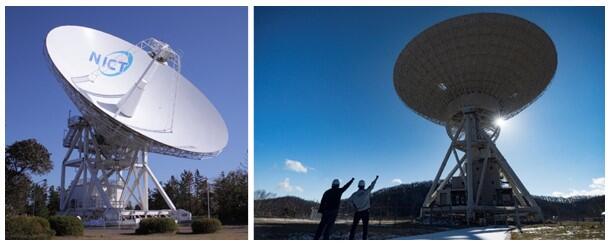Teruaki Enoto team leader of the RIKEN Hakubi Research Team of The RIKEN Cluster for Pioneering Research, the University of Tokyo, Institute for Cosmic Ray Research, Hiroshima University, JAXA, Radio Research Institute, and NASA international joint group announced on April 9 that they succeeded in detecting X-rays that brighten in synchronization with the "Giant Radio Pulse (GRP)" generated by the fast-rotating neutron star "Crab Pulsar." These findings were published in the scientific journal Science.
When a large-mass star undergoes a supernova explosion, black holes and neutron stars are left behind. Neutron stars are surrounded by a magnetosphere, and a substance 1.4 times the mass of the Sun collapses into a radius of approximately 10 km, in an ultra-high-density state. While radiating radio waves and X-rays, it rotates at a high speed of several milliseconds to several tens of seconds per rotation along with the magnetosphere. Therefore, periodic pulses are observed when the radiation from the neutron star is directed toward the earth. The neutrons that generate these pulses are called "pulsars".
The Crab Nebula is a remnant of a supernova explosion that occurred in 1054, approximately 6500 light-years from Earth, and is also described in Fujiwara no Teika's "Meigetsuki." (This historical document is of great importance in Japan). The "Crab Pulsar" exists at the center of the nebula and is one of the most studied celestial body since its discovery in 1968 . It has been observed at almost all wavelengths of electromagnetic waves, including radio waves, visible light, X-rays, and gamma rays. However, the radiation mechanism of the "Crab Pulsar" is not well understood. Furthermore, the "Crab Pulsar" generates a "Giant Radio Pulse (GRP)" in which periodic radio pulses sporadically become 10 to 1000 times brighter than usual, but this phenomenon cannot be explained by the normal radiation mechanism.
Approximately 2,800 pulsars have been found in the galaxy in which the earth is located, but only a few dozen of them generate GRP , and it is considered that this brightening phenomenon occurs only by radio waves. However, in 2003, using a high-speed camera, it was discovered that the pulse of visible light brightened by a few percent in synchronization with the GRP. Various groups worldwide have been trying to detect similar brightening with higher-energy X-rays and gamma rays, but could not confirm it, and it was confined to the upper limit of the spectrum.
Now, the research group has accumulated a total of 15 simultaneous multi-wavelength X-rays and radio wave data, over approximately two years from 2017, by linking the NASA new-generation X-ray telescope NICER and two Japanese radio telescopes. The analysis results revealed that the X-ray pulse was brightened by 3.8% in synchronization with the GRP. NICER is an X-ray telescope and it has the highest level of focusing ability optimized for neutron star observation. It was installed by NASA at the International Space Station in 2017. The radio telescopes used were the Usuda Deep Space Center 64 m radio telescope operated by JAXA and the Kashima 34 m radio telescope operated by the National Institute of Information and Communications at the Kashima Space Technology Center. This research was the final result of the Kashima telescope, which was severely damaged by Typhoon No. 15 in 2019 and had ended its operation.

Although the brightening of X-rays is as small as a small percentage, it is clear that the energy emitted when the GRP is generated is hundreds of times larger than previously thought because X-rays release more energy than radio waves. This achievement is expected to provide new insights into the generation of high-energy particles in pulsars associated with plasma ejection and radio wave radiation.
This article has been translated by JST with permission from The Science News Ltd.(https://sci-news.co.jp/). Unauthorized reproduction of the article and photographs is prohibited.




